Backyard Bees
With all the excitement and work surrounding grape harvest, I forgot to tell you about the new additions to our homestead – Honey Bees! Our backyard bees have been a fun addition to our farm!
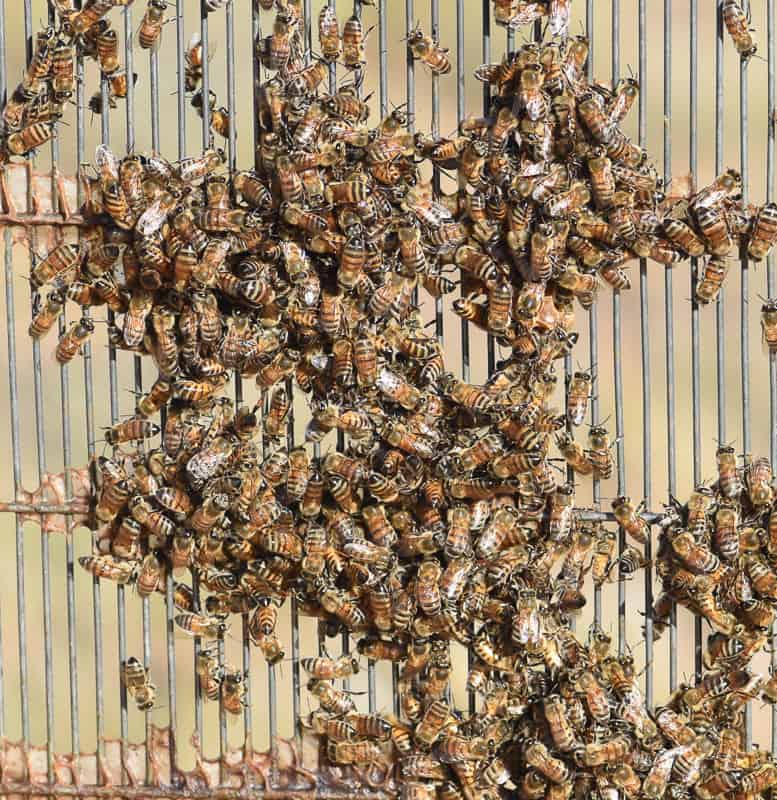
We have been wanting to get into beekeeping for quite awhile. Partly for the enjoyment of beekeeping; partly for sustainability and self-sufficiency; and partly for money saving. But assuredly, for really good honey!
I have been buying raw honey in 5 gallon buckets for years. Now, we will have our own locally produced honey – you can’t get more local than your own backyard! Having our own backyard bees will not only save us money but also adds another dimension to our homestead giving the children a different experience.
We Have Our Own Backyard Bees
A good friend, who is a beekeeper and decided to get out of it, generously gave us everything we needed to get started. He is more than just a friend, we are related – his son is married to our oldest daughter, we are in-laws!
That’s better than being outlaws! But then, outlaws are wanted. 😉
Not only has he gotten us started in bees, but since he extracts bees from houses and other unwanted areas, he has supplied us with a total of six hives (one hive will later be transferred to another friend though), thanks David!
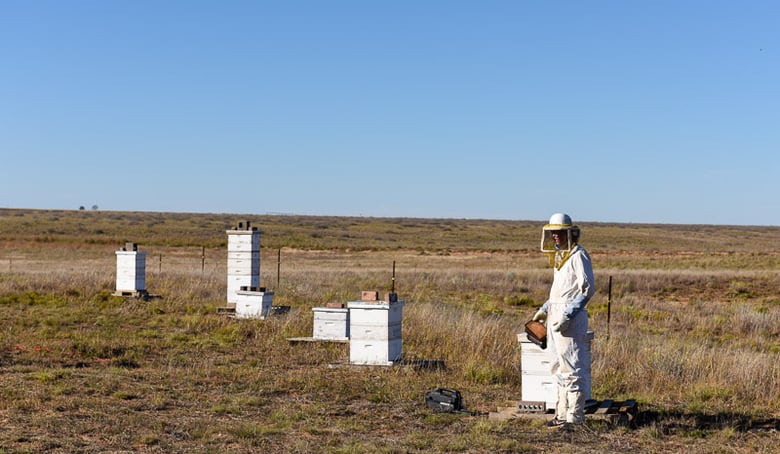
Queen-less Hive
John and the boys have been checking the hives every couple of weeks. One of the hives seemed to have lost its queen. They thought this because there were too many drone bees and they didn’t find any newly laid eggs in the bottom of the cells.
Drones are fertile males and are larger than the worker bees. In an effort to cause the bees to make a new queen, they took a frame out of a hive body from one of the stronger hives and placed it into the queen-less hive. This replacement frame had newly laid eggs which hopefully the “queen-less” hive would feed special food, “royal jelly”. The royal jelly has the hormone mix to mature the larvae into a new queen. The worker bees would also make the queen larva a larger wax cell to grow in since the mature queen is nearly 50% bigger that the worker bees. If after several attempts a queen is not made, the hive would be considered hopelessly-queenless. If no queen is formed the hive dies. 🙁
After the second transfer of egg containing frames, new eggs were found in original frames, indicating that a queen was laying new eggs! Maybe this was due to the transferred eggs or maybe the guys had just missed the queen? But at least the hive was healthy again and the excessive drones were removed.
There have been several times that I would be in the kitchen watching the white suited fellas running from the hives – into the pasture, into the vineyard and toward the barn. It looked funny but I knew the bees were chasing and stinging them!
Extracting Honey
With the cooler weather, it was time to extract the honey those little bees have been producing. Our backyard bees sure are hard workers.
Pulling Frames Full of Honey
Friday, David came over to help us check the hives and take the supers off. The super is where the bees store the honey. Each super holds 9 frames in which the bees build wax honeycomb and store the honey in! David had a little blower to encourage the bees to leave the frames and their honey. OK, it more than encouraged them to go!
The bee-less frames were then moved to the barn.
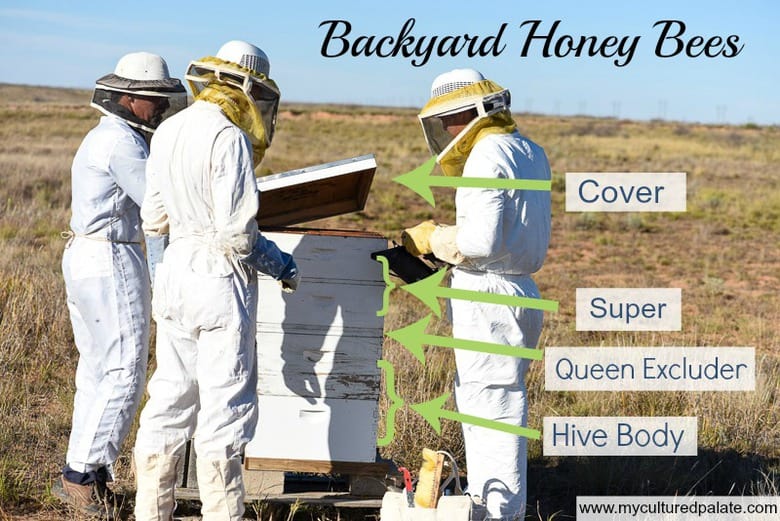
The queen is excluded from the honey storage area by a “queen excluder” that you can see below. The queen is too large to fit through the openings but the worker bees can and they move up through the hive to store the honey in the supers.
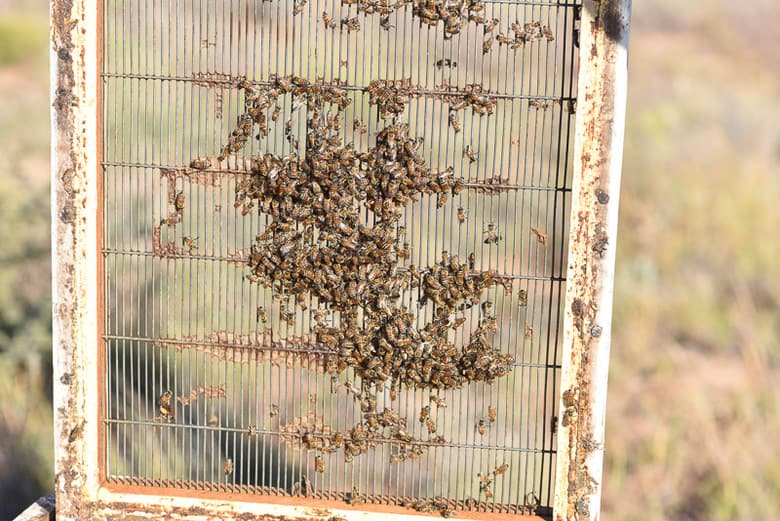
When going into a hive, beekeepers will “smoke” the bees, which slows the bees down acting like a drug. The bees think the house is on fire so they gorge themselves with honey for the quick exit that is to come! This slows them down making them more manageable.
Unfortunately, one hazard of beekeeping is getting stung. You can understand their stinging intruders when you think about it from the bees point of view – they have worked hard and here we come stealing their honey! Almost everyone was stung that afternoon. One was repeatedly stung on his head and in the morning his face was so swollen that he was almost unrecognizable! At his request, I did not take a picture.
Extracting the Honey from the Frames
On Saturday, David came back to walk us through the process of honey extraction. Taking each frame out of the super individually, a hot knife is run down the honeycomb to uncap the cells exposing the honey.
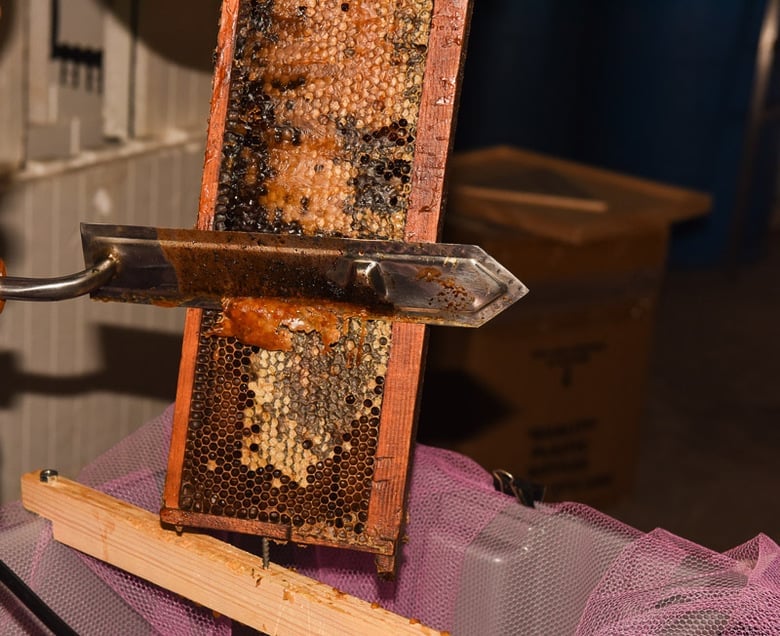
For uneven surfaces, another picking tool is used that opens up the cells – you can see it below.
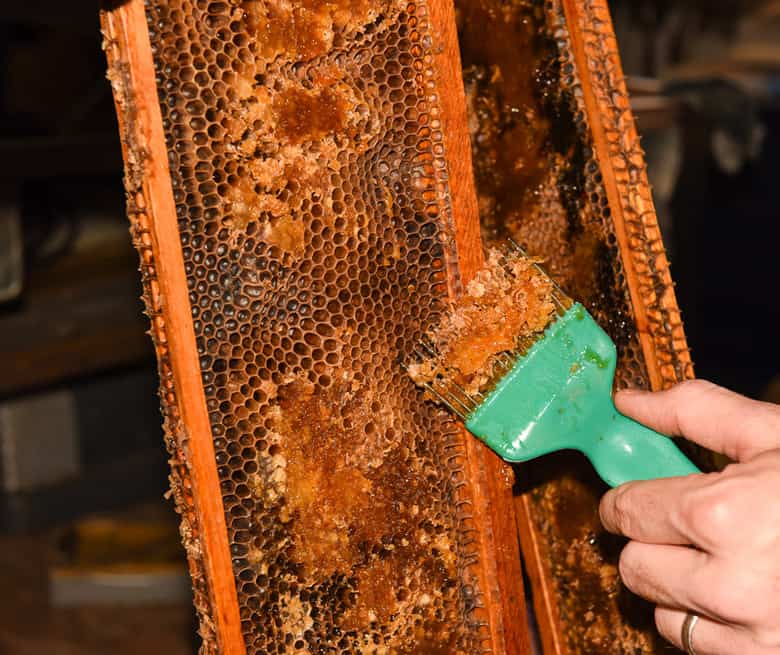
After the hot knife, the frames were put into the extractor, two frames would fit at one time. The extractor was closed up and the crank turned, spinning the frames and slinging the honey out.
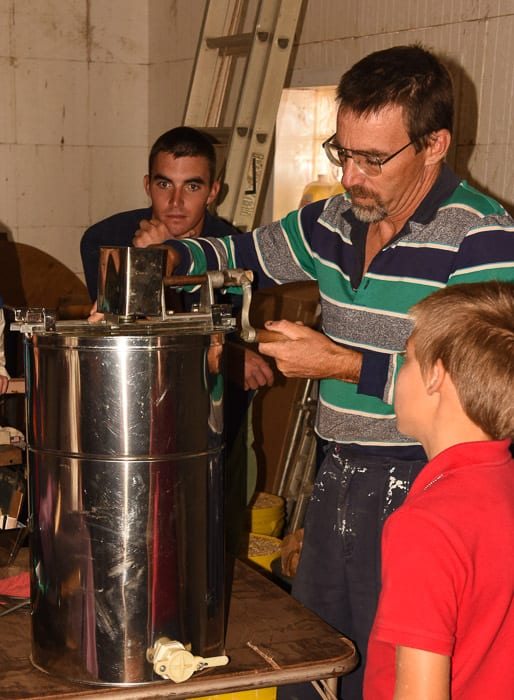
Periodically, the frames were taken out and checked to make sure all the honey was extracted. If all the honey was extracted, the frame was removed and placed back in the super and another frame was put into the extractor.
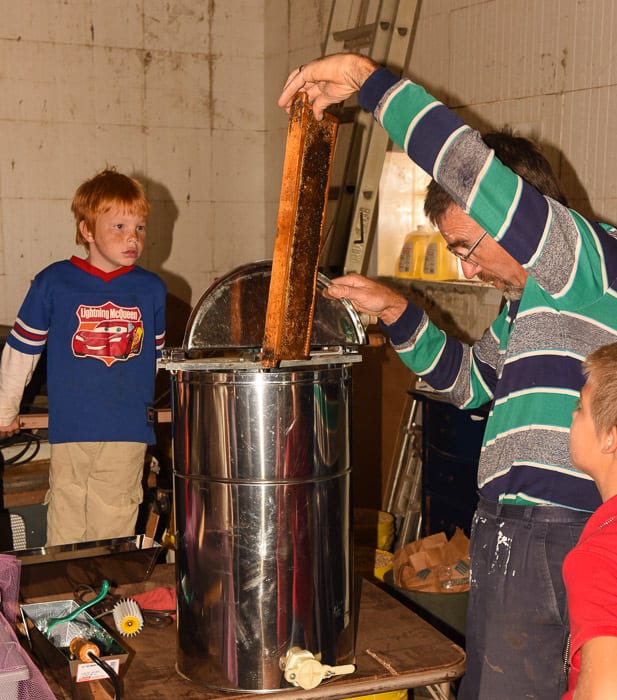
When we were finished, the honey that collected in the extractor was poured through a strainer (to separate out the bee parts) and into glass jars.
Clean-up was easy, all the tools were put outside near the bees and they cleaned them almost completely! Backyard bees sure are handy to have around.
The honey is dark and delicious – we got almost 2 gallons! Hopefully, next year there will be even more honey since we will be getting an earlier start.
Check out the links below for more posts!

Do you plan to make mead?
MQ, I have tried it with the raw honey I’ve purchased and to be honest, it was terrible. Do you make it? Maybe I did something wrong – I would love some pointers!
So neat! Someday I hope to have my own bee hives! I LOVE honey! 🙂